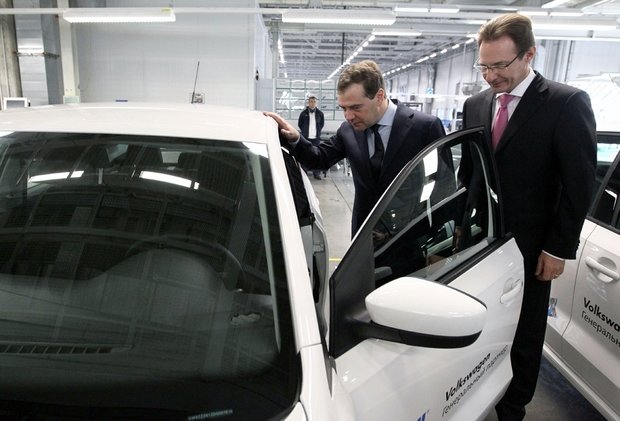Russia to increase auto export twofold by 2019
The government will expand benefits for global automakers who assemble cars at local plants
Last year became rather prosperous for Russia's car industry: domestic sales of new cars returned to growth after a 4-year slump, while export sales added almost a quarter due to the ruble's devaluation. The government aims to double the number of cars exported from Russia by 2019 and is ready to provide additional benefits and subsidies to meet the goal.
Global automakers operating in Russia may significantly increase exports of their locally made cars and engines in coming years, considers WardsAuto, as the Russian government is going to support them by offering special customs benefits and subsidies. As a result, the government expects to double the number of cars exported from Russia by 2019. Last year, the export volume increased by 24,1% compared to 2016. The country supplied 84,400 units with a combined value of $1,32bn to the global market.
The sales have grown mostly thanks to global automakers who focused on exporting Russian-made cars as their costs have reduced significantly due to the ruble's devaluation. For example, Volkswagen Group produced 167,500 vehicles in Russia in 2017. Over two thirds of these cars were manufactured at the company's flagship Kaluga plant, while the rest were assembled at the Nizhny Novgorod plant, which is operated by local contract assembler GAZ. The automaker exported 25,100 units, which was 70% more than in 2016. Volkswagen aims to further increase the export of cars and engines in coming months. About 40,000 engines assembled at the Kaluga plant will be supplied to VW production sites in other countries, primarily across the European Union. Besides, the automaker plans to export up to 10,000 Skoda Octavia cars produced in Nizhny Novgorod.

VW already enjoys export benefits from the Russian government, while negotiations with other producers are in progress. The authorities are seriously concerned with increasing the export of cars, auto parts and engines produced in Russia, so they are ready to provide additional benefits and subsidies, such as lifting of value added tax and other duties on imports of auto parts for vehicles that are ultimately destined for export.
The Russian government is also planning to change the existing distribution of export subsidies among domestic and global automakers. Currently, global automakers with their own assembly plants in the country can apply for minimum subsidies covering 20% of transport costs required for car exports outside Russia. Maximum subsidies that cover 80% of transport costs are available to domestic automakers and those with so-called special investment contracts (such as Daimler, which is supposed to build a Mercedes-Benz plant in Moscow Oblast). The government may increase subsidies for global players to 60-80% of their transport costs.